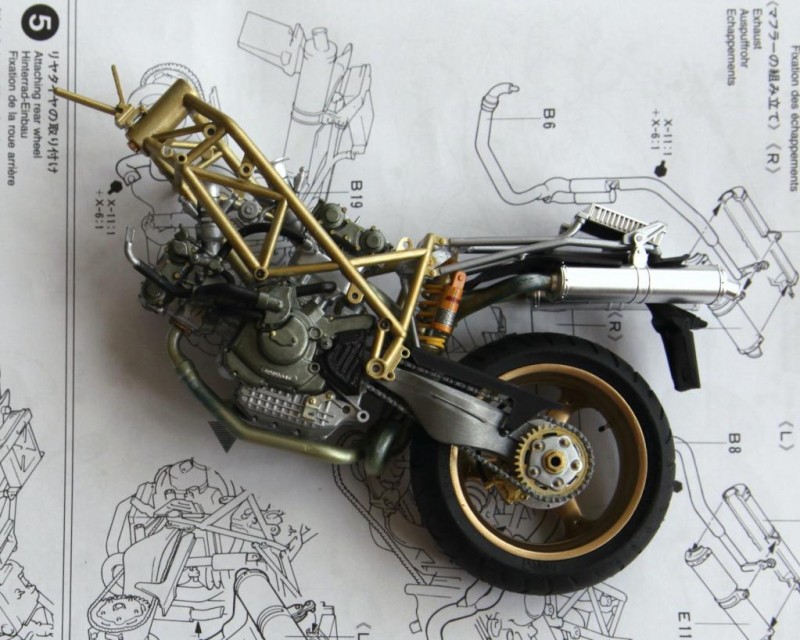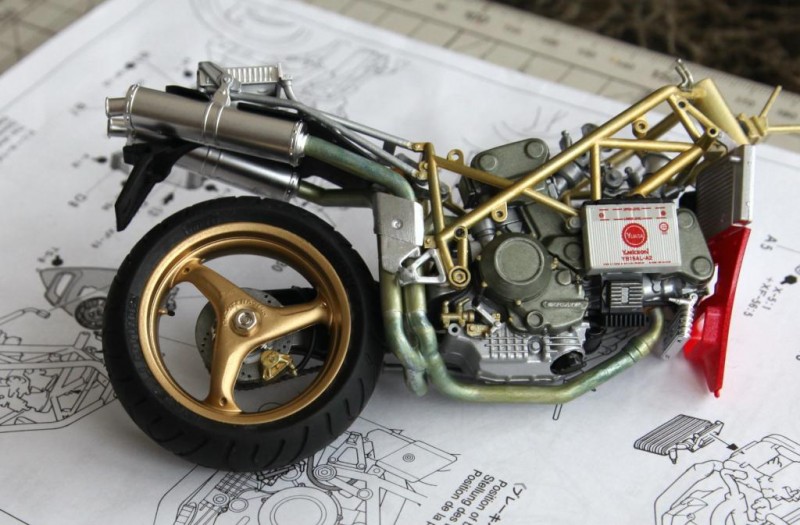Stage 4 of the build involves fitting the exhaust system.
Basically, there are two parts to the exhausts, the pipes and the mufflers, silencers, cans (please use whatever term is familiar to you!). The pipes are moulded in one piece in grey plastic, they just need the seams to be sanded off and they are ready for painting. Tamiya call for a mix one part X11 silver and one part X6 orange, but, this didn't look 'metallic' enough to me. So, I sprayed the pipes silver, and then gave them a thin coat of gold, this started to look better to me, and I followed with some thin mixes of blue to give the effect of heat discolouration.
-

The pipes fit very securely into the silencers. However, these gave me a problem. Tamiya have moulded the silencers in a very nice plated finished, but, they are in two halves. When joined, there is the inevitable seam which should really be filled and sanded, which would spoil the plated finish...What to do? I decided to have a trial fit to see just how much would be visible on the finished model. True to form they fitted so well that no cement would be needed, and, in fact, they fitted so well that I didn't want to risk damaging the rest of the model by trying to remove them. In fact, the seams are only visible from certain angles, so I painted a line of silver into the seams to hide them as best I could.
-

Having fitted the exhausts, stage 5 just involves fitting the rear wheel. I had previously sprayed the wheels gold, lightly sanded the tyres to get rid of the centre seam The tyres are moulded in rubber and are an accurate replica of the Pirelli road tyres fitted to the real thing. You do have to make sure you fit the tyres the right way round!. So far so good.